Irina Slav from OilPrice.com summarised Wood Mackenzie’s Energy Transition Outlook 2025-26 as follows:
- Global demand for crude oil is projected to continue increasing until at least 2032, indicating that the world is significantly off track in meeting its Paris Agreement goals.
- Despite trillions of dollars invested in the energy transition, fossil fuels—oil, coal, and natural gas—still satisfy approximately 80% of the world’s primary energy needs due to their widespread availability, cost-competitiveness, and deep integration into the energy system.
- The report suggests that the energy transition has slowed down because alternative energy sources like wind and solar face challenges such as weather dependence, output variability, and higher true costs when accounting for backup generation and storage.
Simon Flowers, chief analyst at Wood Mackenzie, cautioned that “the global push to tackle climate change has slowed”, as “rising population, economic growth and societal aspirations, particularly in developing countries, drive energy demand higher, outpacing improvements in energy efficiency”.
“It is clear that we cannot quickly swap the current fossil fuel-based energy system for a new, low-carbon one. While renewables’ share of global power supply increased from 5% to 20% over the past decade, it barely met incremental demand growth”, Flowers wrote.
“Scaling up low carbon supply faster than demand growth and building a new, deeply decarbonised, resilient energy system is proving tougher than envisaged”.
“At Wood Mackenzie, we envisage an ‘energy evolution’, in which fossil fuels remain the bedrock of supply for decades to come. They will be complemented by low-carbon fuels that will gain market share and play a critical role in meeting surging global energy demand”.
JP Morgan’s annual energy report also highlighted the painfully slow and costly transition to renewable energy:
“After $9 trillion globally over the last decade spent on wind, solar, electric vehicles, energy storage, electrified heat and power grids, the renewable transition is still a linear one; the renewable share of final energy consumption is slowly advancing at 0.3%-0.6% per year”.
Overall, solar power accounts for ~2% of global final energy consumption, a figure JP Morgan expects to reach 4.5% by 2027.
“Even if these solar trends continue into the 2030’s, human prosperity will be inextricably linked to affordable natural gas and other fossil fuels for many years”, the report says.

Across the OECD, gas and oil dominate energy use:
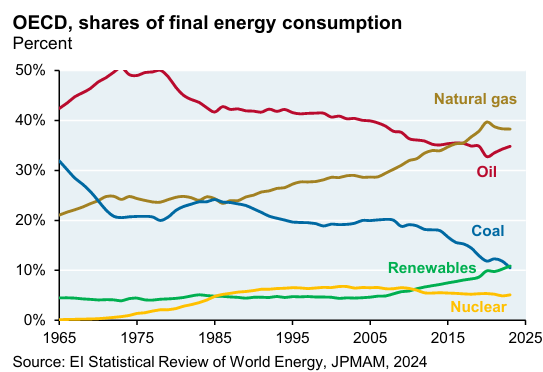
Fossil fuel consumption also continues to rise globally:
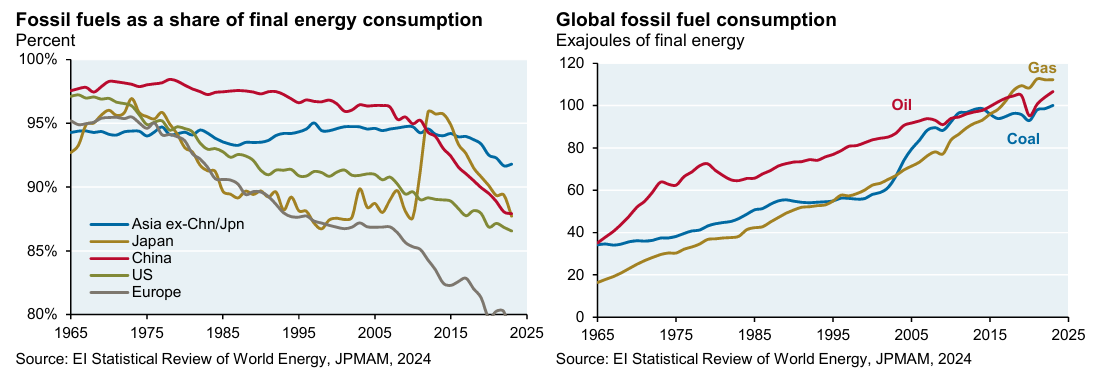
JP Morgan also warned of system unreliability and rising costs due to the intermittent nature of renewables.
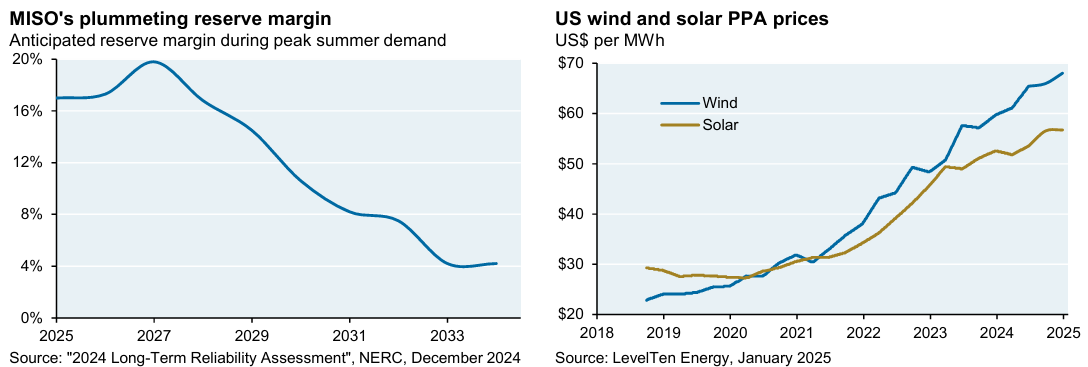
China is regularly touted as leading the world in building wind and solar farms. While this is technically true, China is also leading the world in building coal plants.
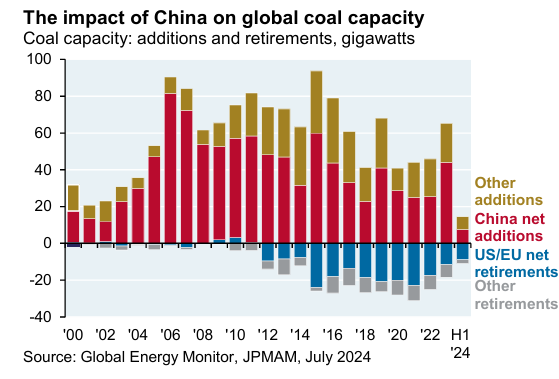
As a result, China’s energy consumption is overwhelmingly dominated by fossil fuels:
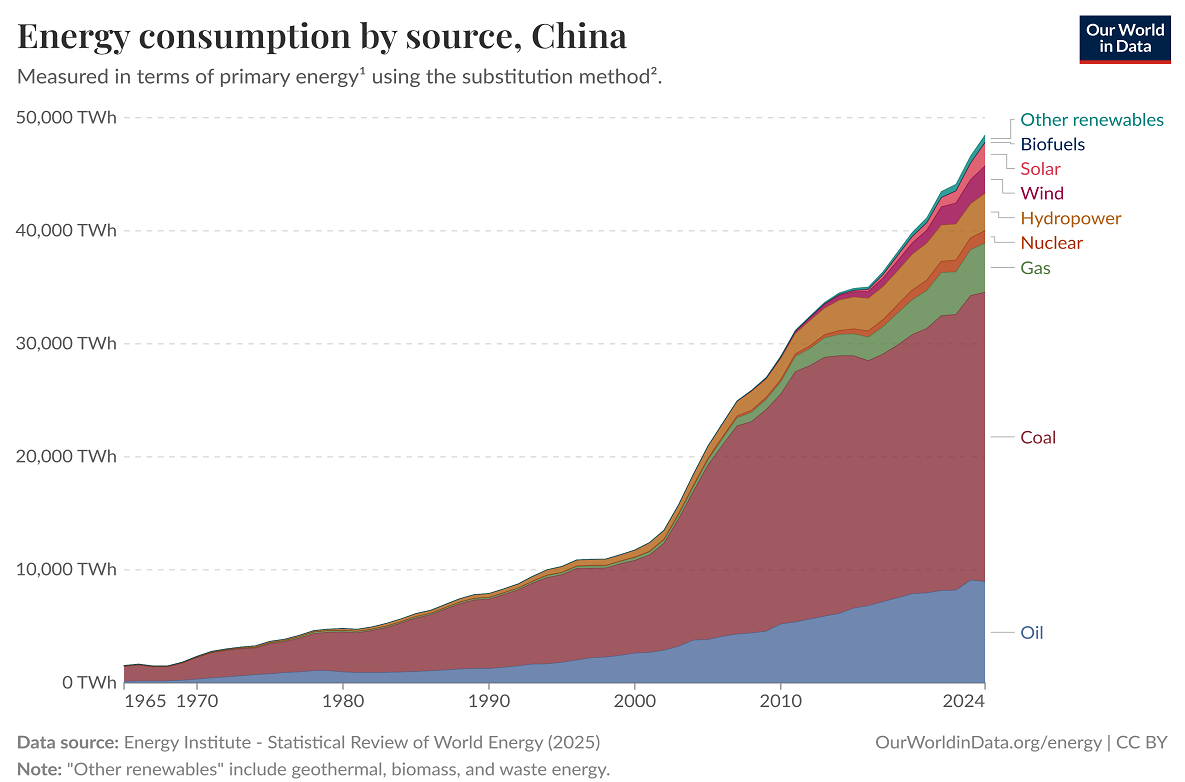
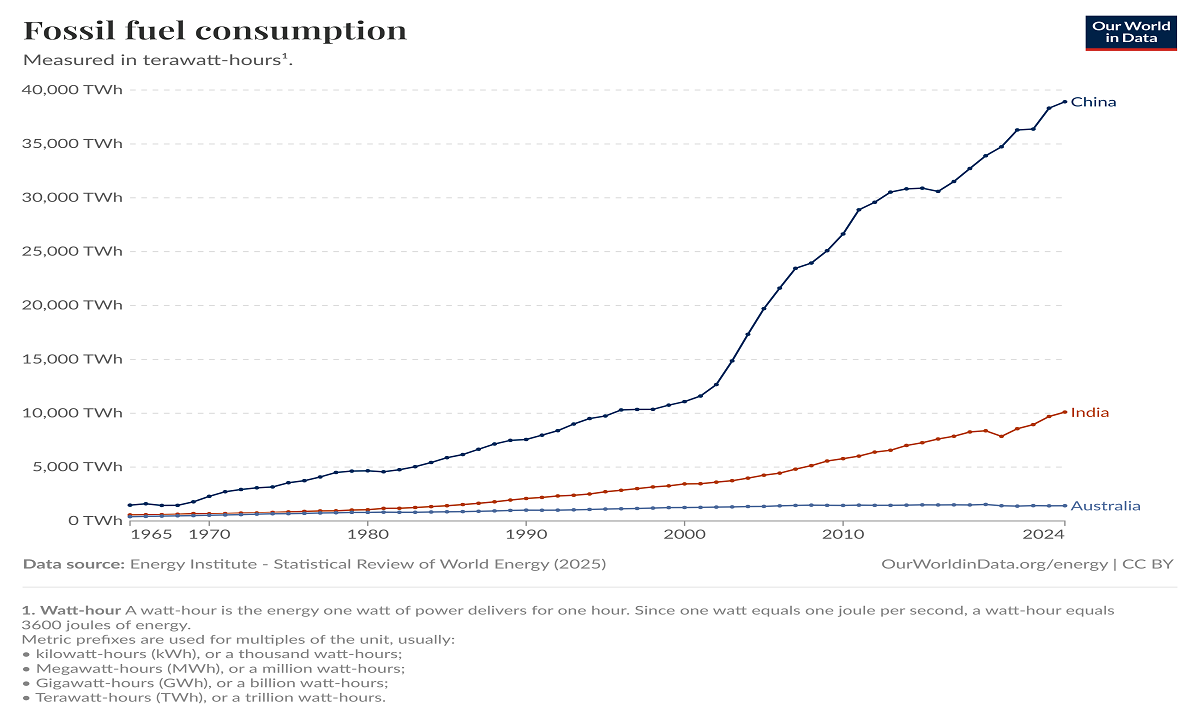
The story is similar in Australia, which has invested tens of billions of dollars into so-called clean energy.
According to the federal government’s 2025 Australian Energy Update, only 9.3% of Australia’s primary energy consumption in FY 2024 came from renewable sources.
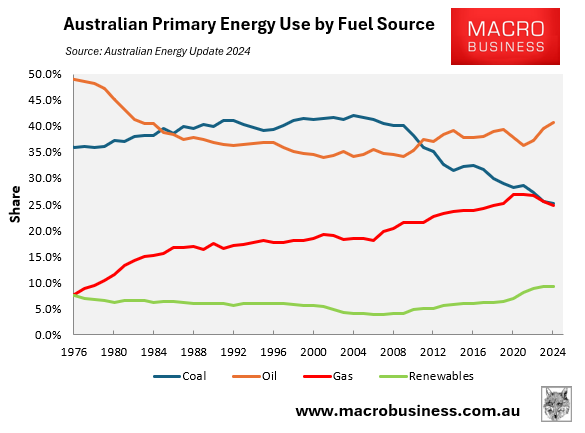
As of FY2024, the breakdown of energy consumption by fuel source was as follows:
- Coal: 25.3%
- Oil: 40.7%
- Gas: 24.7%
- Renewables: 9.3%
Despite the many billions of dollars already spent on renewable energy generation, the share of energy consumption from renewable sources was only slightly higher in FY2024 (9.3%) than in FY1974 (7.%).
While coal consumption has fallen significantly (-35%) since 2007, this has been offset by a 22% rise in oil consumption and a 31% lift in natural gas use.
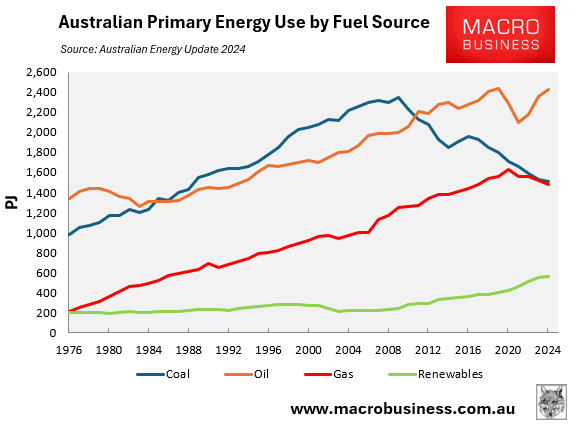
Renewables fanboys love to post every time wind, solar, and hydro comprise most of the power consumed on a given day, in a specific place. It is like only reporting when a batsman scores a century in test cricket.
What really matters is energy consumption throughout the year and the costs involved. On this front, the renewable energy transition is failing.

